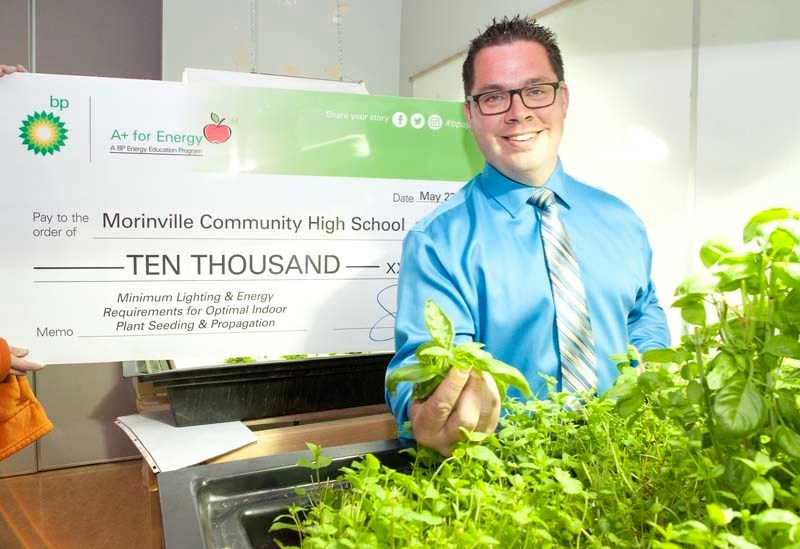The future of Morinville’s urban agriculture class got a lot brighter – and potentially cheaper – this week after a local high school scored a $10,000 grant for energy efficiency.
Morinville Community High School received a $10,000 grant from the BP A+ For Energy program Monday. The grant is meant to help the school’s urban agriculture class research more efficient ways to light its indoor greenhouse.
The news came as a surprise to teacher Neil Korotash, who applied for the grant. Staff and students got the news last Friday, but decided to keep him in the dark.
“Surprise!” they cried, as he walked into his classroom Monday to see them holding an oversized novelty cheque.
The A+ For Energy program awards teachers in Alberta and the Northwest Territories up to $10,000 for teaching students about energy conservation in innovative ways. BP gives out about 40 of these grants a year, Korotash said.
St. Albert Catholic High won a similar grant in 2012 to buy bicycle-powered generators.
The urban agriculture students have been growing mint, basil, cucumbers and tomatoes indoors all winter using high-powered 1,000 watt metal halide bulbs that run 16 hours a day, Korotash said. It costs between $350 and $1,000 a year to run the bulbs, which isn’t financially sustainable.
There’s a lot of conflicting advice out there on what types of light to use for hydroponics labs, especially since most of it deals with illegal drug grow-ops, Korotash continued.
“Do you really need to spend the extra money to buy the high-efficiency lighting?”
Korotash said he hopes to have the class test three to four types of lighting next year to see which produces the best plants for the least energy. The students will come up with the experimental design and he hopes the results will be of use to local greenhouse owners.
The lights should also be of use to biology and science students, who can use them to study photosynthesis and energy use, he said.
This grant will help the urban agriculture class grow even more than it already has in its first year, said principal Todd Eistetter. The school hopes to eventually add a second level to the course due to its popularity, he added.
Korotash credited the students for the course’s success.
“It’s the students that make the course what it is,” he said.
Grant recipients get to attend a free energy efficiency conference in August and receive $500 to spend on instructional materials.
The awards ceremony for the grants is Aug. 20.




